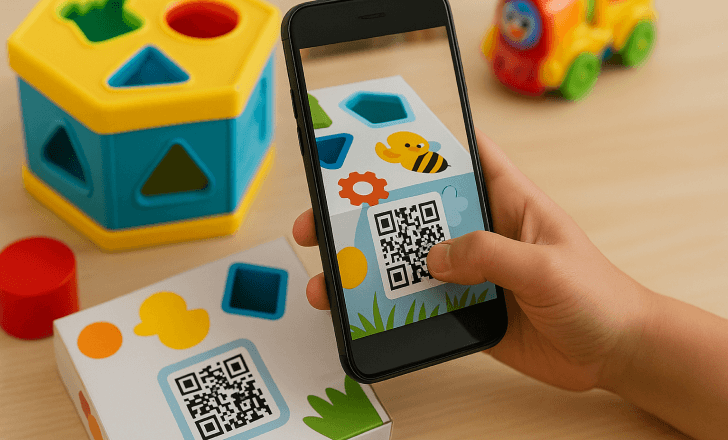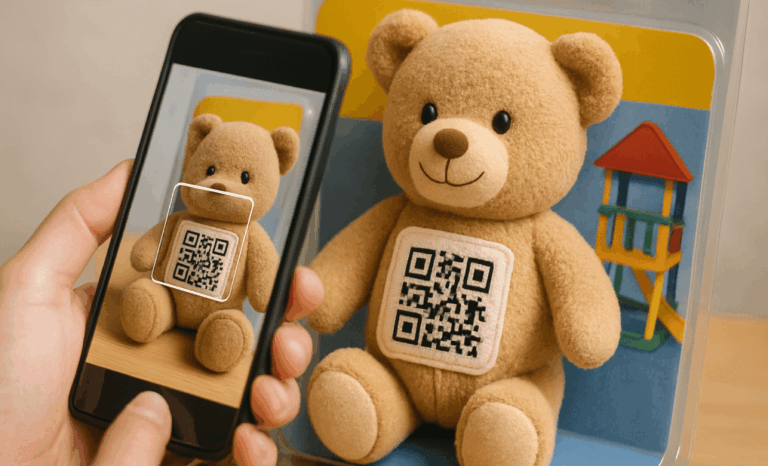QR codes for toys are changing the way children interact with physical products—and how toy brands connect with their customers. With a simple scan, a traditional toy transforms into a digital gateway: unlocking games, tutorials, educational content, and brand experiences that keep families engaged far beyond the initial purchase.
In this guide, we’ll explore how toy manufacturers and retailers can use dynamic QR codes to elevate packaging, streamline operations, boost customer engagement, and enhance product safety. Whether you’re looking to improve supply chain visibility or deliver bonus content directly into the hands of young users, QR codes offer a versatile and scalable solution.
Why use QR codes on toy packaging?
Toy packaging is no longer just about bright colors and catchy slogans. Today, smart packaging with QR codes helps brands link directly to digital experiences that extend playtime, provide helpful resources, and encourage repeat engagement.
Here are just a few reasons toy companies are generating QR codes for their products:
- Providing instant access to assembly instructions and warranty info
- Delivering interactive content like printable coloring pages or digital games
- Ensuring compliance with safety certifications and documentation
- Tracking scan data to spot trends and improve marketing efforts
- Offering bonus content that builds brand loyalty and excitement
The benefits extend beyond kids and parents—retailers and logistics teams also gain tools for inventory management, quality assurance, and supply chain accuracy.
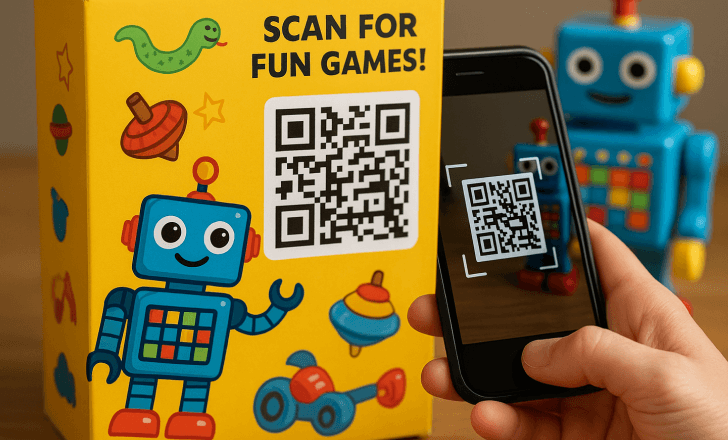
What are QR codes and how do they work in the toy industry?
A QR code (short for “quick response code”) is a type of 2D barcode that can be scanned by most mobile devices. With a smartphone or tablet camera, users can scan QR codes to instantly open a linked URL, app, or media file.
In the toy industry, brands typically create QR codes that lead to:
- Companion apps
- Instructional videos
- Digital adventures
- Product registration portals
- Special promotions or seasonal content
Using a dynamic QR code generator like QR Code KIT allows you to update the destination behind the code even after printing—ideal for toys that are part of evolving product lines or feature rotating campaigns.
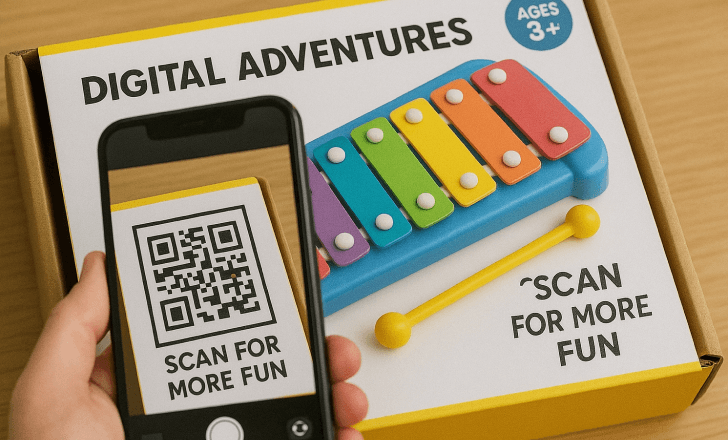
Key benefits of QR codes for toy brands
Let’s break down the top advantages of integrating QR codes into your toy business:
1. Seamless customer engagement
QR codes offer a direct bridge between the physical world and the digital worlds kids now inhabit. A scan can turn a dollhouse into an AR playground, or a plush toy into the star of its own mobile game.
This level of interaction not only delights children—it also boosts customer engagement by providing value long after purchase.
2. Efficient inventory management and logistics
Manufacturers use QR codes internally to tag batches, manage stock levels, and track products throughout the supply chain. When paired with cloud platforms, this creates a real-time overview of global operations—reducing errors and increasing speed.
3. Better safety and compliance
By linking directly to compliance documents, safety certifications, and testing protocols, QR codes help brands demonstrate trustworthiness. This transparency is increasingly important for parents researching toys online or in-store.
4. Instant access to resources
QR codes can lead to:
- Assembly instructions
- Care and cleaning tips
- Warranty details
- Product registration forms
- Unboxing videos
No more searching through drawers for lost manuals. Everything is a scan away.
5. Marketing flexibility and personalization
With dynamic QR codes, marketers can update content seasonally, segment by campaign, or run A/B tests to see which digital experiences drive the most repeat engagement.
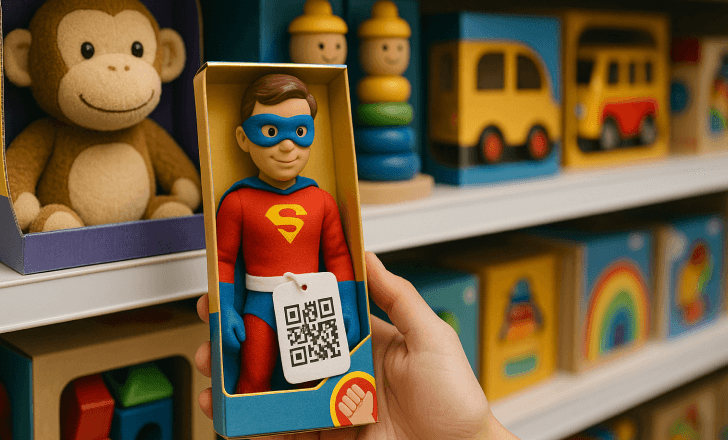
What types of content can QR codes unlock on toys?
The creativity here is endless—but here are some of the most successful types of linked content:
Educational content
From alphabet games to STEM challenges, QR codes can connect children to learning resources that enhance physical play with cognitive development.
Interactive games
A toy figurine might unlock a mobile puzzle game or become part of a larger narrative adventure—encouraging extended use and brand loyalty.
Coloring pages and crafts
Parents love scan-to-download printable coloring pages that match the toy’s theme. They’re simple, affordable, and keep kids busy.
Step-by-step tutorials
QR codes on complex construction sets can link to video instructions or 3D assembly guides, making the process smoother and more enjoyable.
Augmented reality experiences
Some brands are exploring augmented reality features that activate through QR codes—placing the toy in virtual settings or encouraging motion-based interactions.
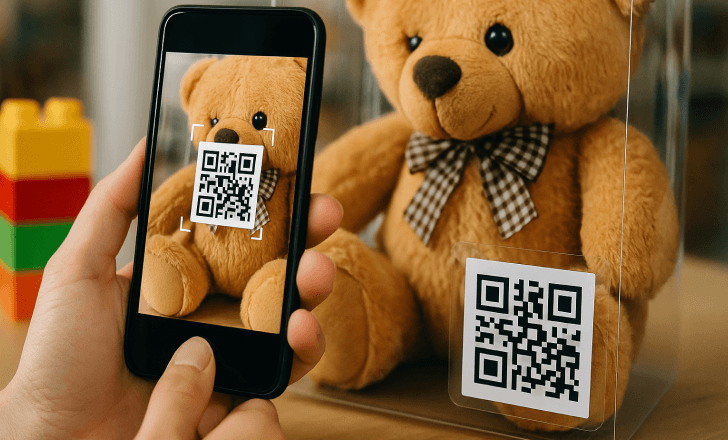
How to design effective QR codes for toys
Great QR code design is essential—especially when your audience includes children and parents.
Prioritize scannability
Ensure the code contrasts with the background, and test it across multiple mobile devices before printing. Use QR Code KIT’s platform to verify legibility at different sizes.
Keep visual appeal
Integrate the code seamlessly into your product packaging or toy design without it feeling intrusive. Branded QR frames and custom colors help here.
Use clear calls to action
Tell users what they’ll get. A simple “Scan for bonus game!” or “Watch the unboxing video!” works far better than a silent square.
Avoid scanning issues
Never print on reflective surfaces or wrap QR codes around curves. Always double-check that every batch scans before shipment.
QR codes for toy manufacturers: Internal use cases
Beyond consumer experiences, toy manufacturers can use QR codes to improve operations.
Track components and batches
By assigning QR codes to parts or kits, manufacturers ensure more efficient inventory management and faster response in case of recalls.
Streamline quality assurance
QR codes can store test results, compliance checks, or even staff sign-offs—accessible at a glance from the warehouse floor.
Simplify supplier coordination
Codes on raw materials help maintain traceability throughout production—crucial for complex toy offerings with multiple components.
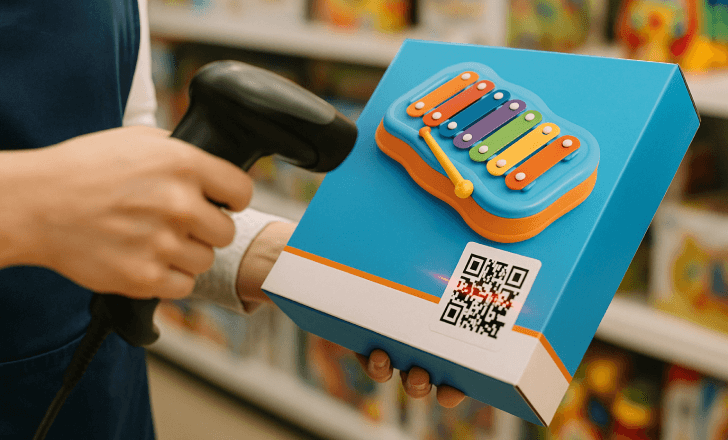
Real-world examples of QR code usage in the toy industry
While many brands keep their strategies under wraps, here are a few examples (fictionalized for illustration):
- A doll brand links QR codes to a growing series of digital adventures, keeping kids invested week after week.
- A puzzle company provides step-by-step video guides via QR code, reducing customer service calls.
- A collectible line connects each figure to its origin story online, encouraging repeat engagement and trading.
- A building toy includes AR scenes activated by scanning different parts of the completed model.
These examples discussed above demonstrate the potential to enhance the customer experience without overhauling your product.
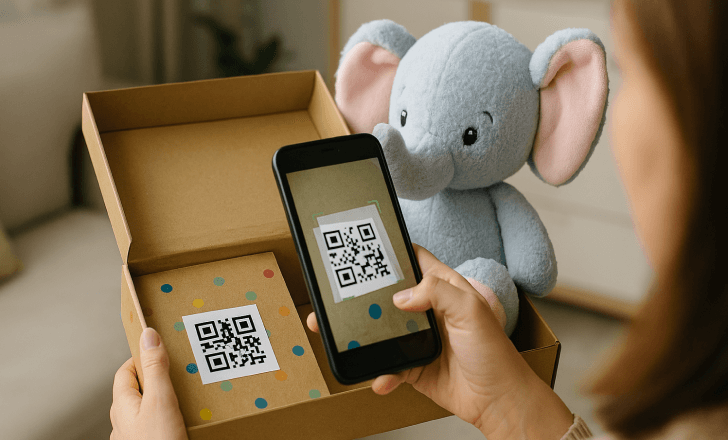
How QR Code KIT supports the toy industry
QR Code KIT offers a robust solution for toy manufacturers, marketers, and retailers alike. Here’s why it stands out:
- Create QR codes in bulk for seasonal campaigns or rotating SKUs
- Use dynamic QR codes to update destinations after printing
- Customize QR code design to match your brand and packaging
- Track scan data to optimize content and spot performance trends
- Ensure QR codes comply with size and safety standards
- Scale across your entire toy brand or line
With a user-friendly interface and flexible API integrations, QR Code KIT adapts to both small toy creators and global enterprises.
And now, with our latest artistic QR codes feature, you can turn standard QR codes into playful, brand-aligned visuals that fit perfectly on toy packaging—without compromising scannability. Whether you’re promoting digital adventures or adding flair to a collectible, these custom-generated codes bridge imagination and interaction, helping your toy products truly stand out.
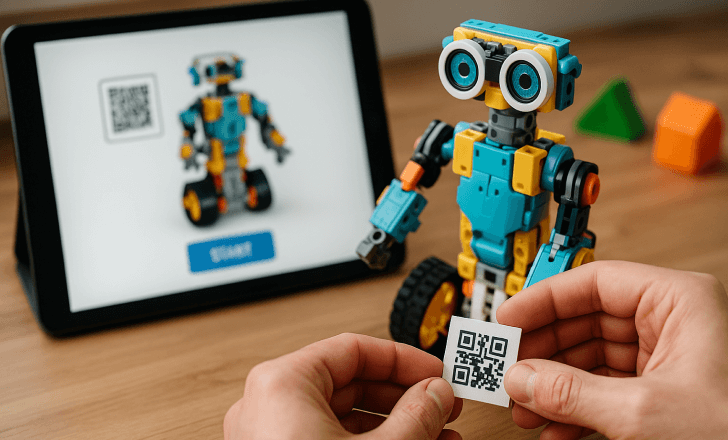
What should you avoid when using QR codes for toys?
Even a great strategy can backfire if these common pitfalls aren’t addressed:
- Not testing scannability on real-world surfaces
- Overloading the experience with too many steps or slow-loading pages
- Linking to outdated or broken content
- Failing to provide context for parents or guardians
- Ignoring privacy or safety concerns, especially for child users
Always focus on helpful resources, simple actions, and strong data protection.
Can QR codes support brand reputation and loyalty?
Absolutely. When you embed helpful, creative, or delightful digital experiences into your products, customers take notice. That moment of “wow” when a toy comes to life—or when a parent easily finds safety info—builds trust, brand reputation, and loyalty.
Add in the ability to offer seasonal content, sneak peeks of new releases, or “thank you” rewards, and QR codes become an ongoing relationship tool—not just a one-time scan.
How to get started: A step-by-step guide
- Choose your content: Decide what you want to offer—games, videos, guides, etc.
- Design your QR code: Add branding, customize colors, and select a call to action.
- Test across platforms: Use different smartphones, lighting conditions, and distances.
- Integrate with packaging: Place the code where it’s visible, scannable, and intuitive.
- Launch and track: Use analytics to refine your campaigns and improve results over time.
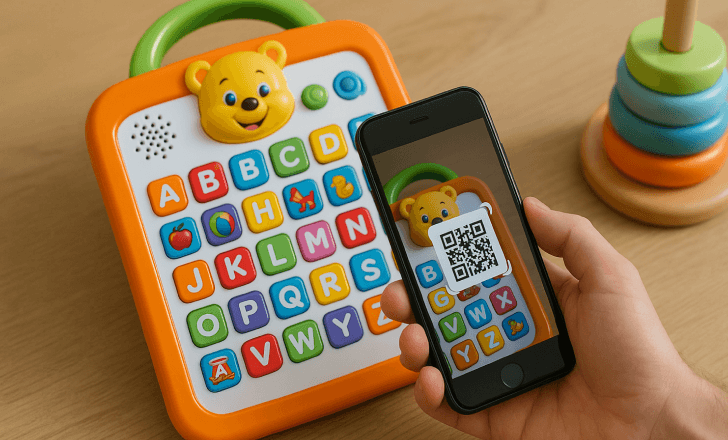
Are QR codes a trend or a long-term solution in the toy business?
The toy industry is uniquely positioned to benefit from QR codes—not just for their practicality, but for their ability to blend physical and digital worlds in playful, meaningful ways. As toys become more connected, and as families continue using phones and tablets for research and interaction, QR codes offer a long-term opportunity to engage, inform, and surprise.
They’re not a gimmick—they’re a tool. One that works across marketing, compliance, logistics, and most importantly: imagination.
